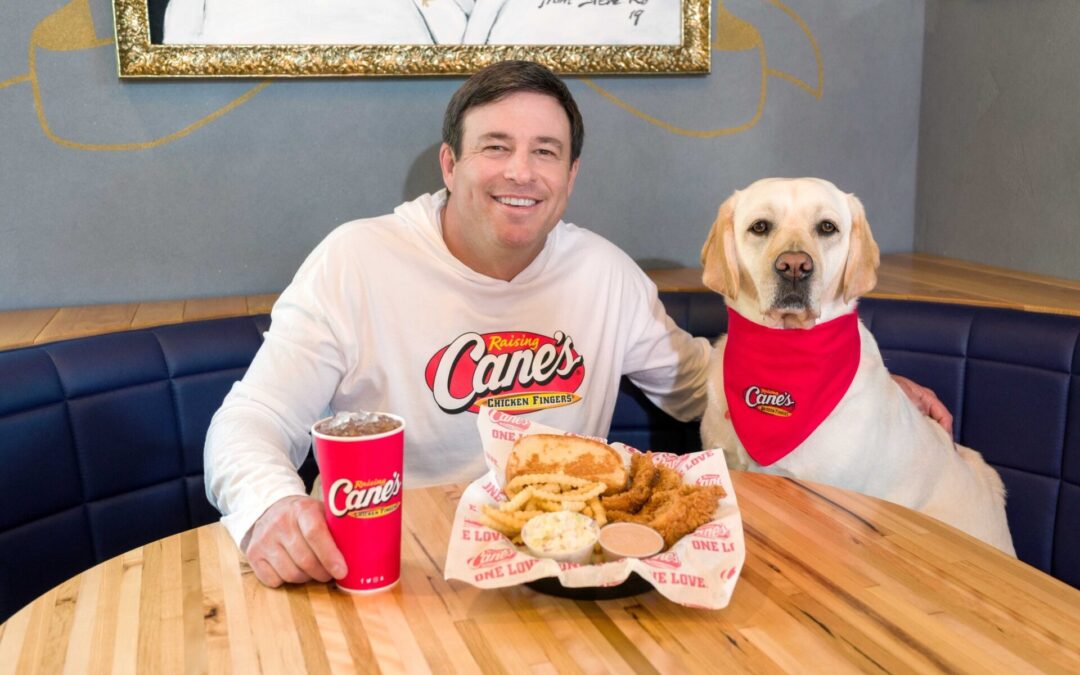Chicken Fingers, Raising Cane, and The F Word. (FOCUS)
In the cutthroat world of quick-service restaurants (QSRs), where menu innovation and expansion often drive growth strategies, one chain stands out for its unwavering commitment to a single product: Raising Cane’s Chicken Fingers.
This focus, often underappreciated in branding strategies, has propelled Raising Cane from a college project to a national sensation. Let’s explore the history of this unique brand and extract valuable lessons for aspiring entrepreneurs and established businesses alike.
The Raising Cane’s Story: From College Dream to Chicken Empire
Raising Cane’s journey began in 1996 when Todd Graves, a college student at Louisiana State University, received the lowest grade in his class for a business plan centered around a chicken finger restaurant. Undeterred, Graves worked in oil refineries and commercial fishing to raise capital. He renovated an old building near LSU’s campus and opened the first Raising Cane in August 1996.
Named after Graves’ yellow Labrador, Raising Cane’s offered a simple menu: chicken fingers, crinkle-cut fries, Texas toast, coleslaw, and the signature Cane’s sauce. This streamlined offering, coupled with a focus on quality and customer service, resonated with customers. From its humble beginnings, Raising Cane’s has grown to over 600 locations across the United States and several international markets.
Chicken Finger Facts:
Number of Locations: As of 2023, Raising Cane has over 600 locations.
Location Distribution: Raising Cane’s restaurants are primarily in the United States, spanning more than 30 states. The chain has a strong presence in its home state of Louisiana and has expanded significantly in Texas, Ohio, and California. They’ve also begun international expansion with locations in several countries, including Middle East (Bahrain, Kuwait, Saudi Arabia, United Arab Emirates) and Asia (South Korea)
Estimated Revenue: While private companies don’t typically disclose detailed financial information, there are some estimates available:
- In 2022, Raising Cane reported system-wide sales of approximately $2.4 billion.
- The average unit volume (AUV) for a Raising Cane’s restaurant is estimated to be around $3.7 million annually, which is considerably high for the fast-food industry.
Ownership Structure: Raising Cane’s is a privately held company. Here are the key points about its ownership:
- Founder Todd Graves remains the majority owner and CEO of the company.
- In 2020, Graves reportedly held about 80% ownership of the company.
- Graves is reportedly the country’s 107th-richest person, with an estimated net worth of $9.5 billion, primarily driven by his ownership stake in Raising Cane’s.
- The remaining ownership is believed to be distributed among early investors and key employees, although specific details are not publicly available.
- Unlike many fast-food chains, Raising Cane’s does not franchise its restaurants in the United States. All U.S. locations are company-owned, which allows for tighter control over operations and brand consistency.
- Raising Cane’s has partnered with select operators in different countries for international expansion, but these arrangements are more akin to joint ventures than traditional franchising.
It’s important to note that, as a private company, some of this information may not be entirely up-to-date or fully verified. The company’s rapid growth means these numbers can change quickly.
Three Crucial Lessons from Raising Cane’s Success
1. The Power of Focus
Raising Cane’s success lies in its unwavering focus on a single product: chicken fingers. While other QSRs constantly expand their menus to cater to diverse tastes, Raising Cane’s has stood firm with its original, limited menu. This focus allows them to perfect their product, streamline operations, and create a strong brand identity. Raising Cane’s simplicity is refreshing and memorable in a world of endless choices.
Contrast with other QSRs: Many fast-food chains frequently introduce new items, leading to menu bloat and operational complexities. This can dilute brand identity and compromise quality. Raising Cane’s approach proves that doing one thing exceptionally well can be more effective than trying to please everyone.
Simplicity is their true secret sauce.
2. Quality Over Quantity
Focusing on a single product allows Raising Cane to maintain strict quality control. Their chicken is never frozen, It is hand-battered and cooked to order. This commitment to quality extends to their other menu items and customer service. The result is a consistently superior product that builds customer loyalty.
Contrast with other QSRs: Many fast-food chains prioritize speed and low costs, often at the expense of quality. Raising Cane shows that customers are willing to pay a premium and even wait longer for a higher-quality product.
3. Brand Authenticity and Storytelling
Raising Cane’s has built a strong brand narrative around its founder’s perseverance and the company’s dedication to its product. The brand’s name, derived from Graves’ dog, adds a personal touch that resonates with customers. This authentic story and consistent messaging create an emotional connection with their audience.
Contrast with other QSRs: Many fast-food chains struggle to maintain a consistent brand image due to frequent menu changes and shifting marketing strategies. Raising Cane’s straightforward approach allows for precise, consistent messaging that reinforces its brand identity.

The Underappreciated Power of Focus in Branding
Raising Cane’s success underscores an often-overlooked aspect of branding: the power of focus. In a market saturated with choices, a focused brand can cut through the noise and establish a clear identity in consumers’ minds. This focus allows for:
1. Clearer messaging and brand positioning
2. Operational excellence and consistency
3. Strong brand recall and customer loyalty
While diversification can be a valid strategy for some businesses, Raising Cane proves that doubling your core strength can lead to remarkable success. As businesses navigate an increasingly complex marketplace, the lesson from Raising Cane’s is clear: sometimes, less is more. By focusing intensely on what you do best, you can create a brand that stands out and resonates deeply with your target audience.
Raising Cane’s journey from a college business plan to a national QSR powerhouse is a testament to the underappreciated power of focus in branding. They’ve carved out a unique position in a crowded market by sticking to their guns and perfecting a single product.
For businesses looking to strengthen their brand, the question might not be: what more can we offer? Instead, Raising Cane’s focus was on what we can truly excel at.
Respect the F words. focus, fingers, and financial success.
All photos and videos belong to Raising Cane and are their sole property.
Connect with Jeff at The Marketing Sage Consultancy. Interested in setting up a call with me? Use my calendly to schedule a time to talk. The call is free, and we can discuss your brand and marketing needs. If you want to learn more about my new offering, The Trusted Advisor Board, you can click here to learn the details. Feel free to email me at jeffslater@themarketing sage.com or text 919 720 0995. Thanks for your interest in working with The Marketing Sage Consultancy.





